- Books Name
- Class-8 Science Book
- Publication
- PathSet Publications
- Course
- CBSE Class 8
- Subject
- Science
Adding Manure and Fertilizers
Why are manure and fertilizers added to the soil?
When crop after the crop is grown in the same field, the soil becomes poor in certain nutrients. Manure and fertilizers are added to the soil to replenish it with nutrients to ensure the healthy growth of plants.
What are the different types of manure that farmers can use?
Manure can be of various types, such as:
- Natural Organic Manure: This includes raw manure, compost, and green manure:
- Raw manure is a mixture of cattle and domestic waste.
- Compost is well-rotted plant and animal residue.
- Green Manure is crops grown in the field as the pure crop or as an intercrop between the main crops - and then, buried in the field to enrich the soil.
- Biofertilizers: These are the nitrogen-fixing organisms that are widely used in organic farming and make agriculture sustainable. These include Rhizobium, Azotobacter, blue-green algae, and Mycorrhizae (a type of fungi that increases phosphorus uptake in fruit crops like papaya and citrus fruits).
- Vermi-Compost: It is a type of compost that is made using earthworms.
What are the three methods of replenishing the soil with nutrients?
The three methods of replenishing the soil are:
- Adding organic manure to the soil.
- Adding chemical fertilizers to the soil.
- Leaving the field uncultivated (or fallow) between two crops.
- Crop rotation is a practice in which different crops are grown alternately to allow the soil to replenish with different nutrients.
Difference between Manure and Fertilizers
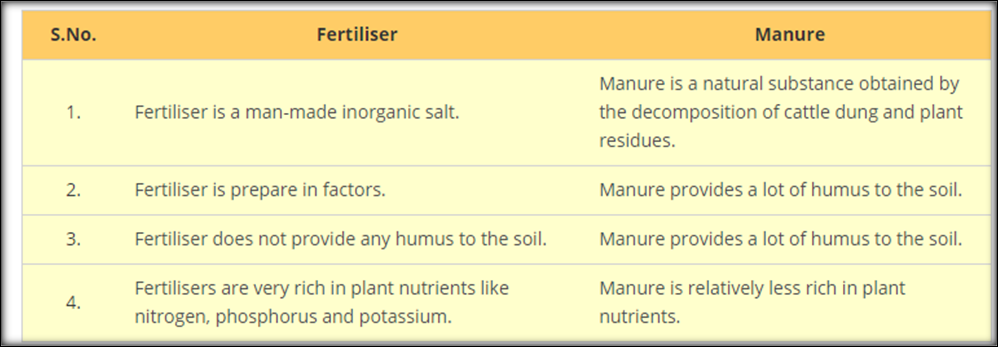
- When crop after the crop is grown in the same field, the soil becomes poor in certain nutrients.
- Manure and fertilizers are added to the soil to replenish it with nutrients to ensure the healthy growth of plants.
- Fertilizers are chemicals used to add minerals like potassium, phosphorus and nitrates to the soil.
Manure are of various types such as:
- Natural organic manure
This includes:
- Raw manure – is a mixture of cattle and domestic waste.
- Compost – it is well-rotted plant and animal residue.
- Green manure – these are crops grown in the field as a pure crop or as an intercrop between the main crops and then buried in the field to enrich the soil.
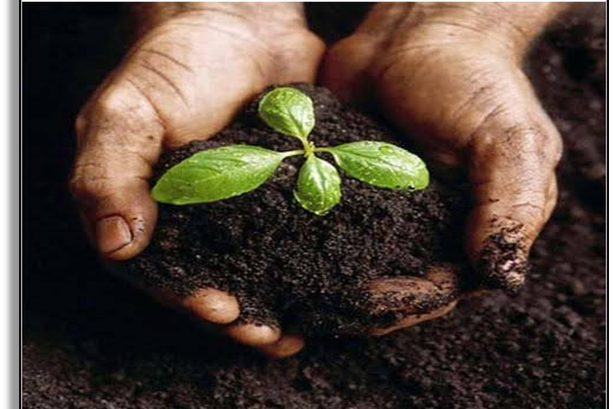
- Biofertilizers:
- These are the nitrogen-fixing organisms that are widely used in organic farming and make agriculture sustainable.
- These include Rhizobium, Azotobacter, Blue-green algae.
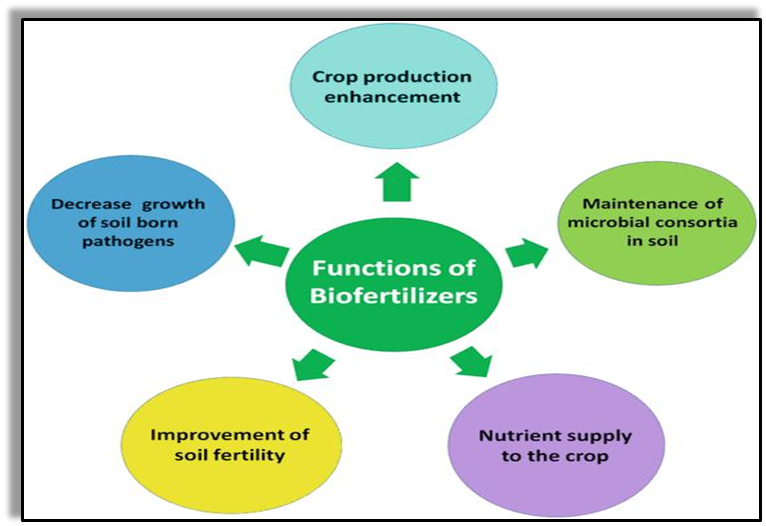
- Vermicompost:
- It is a type of compost that is made using earthworms.
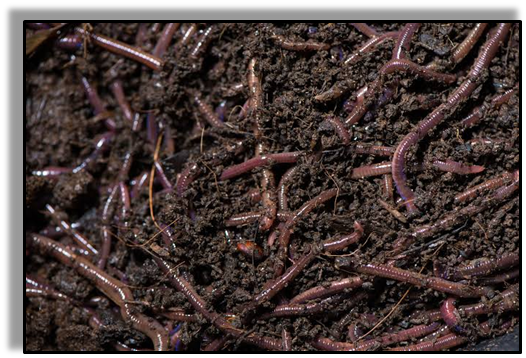
Methods of Replenishing the soil with nutrients are:
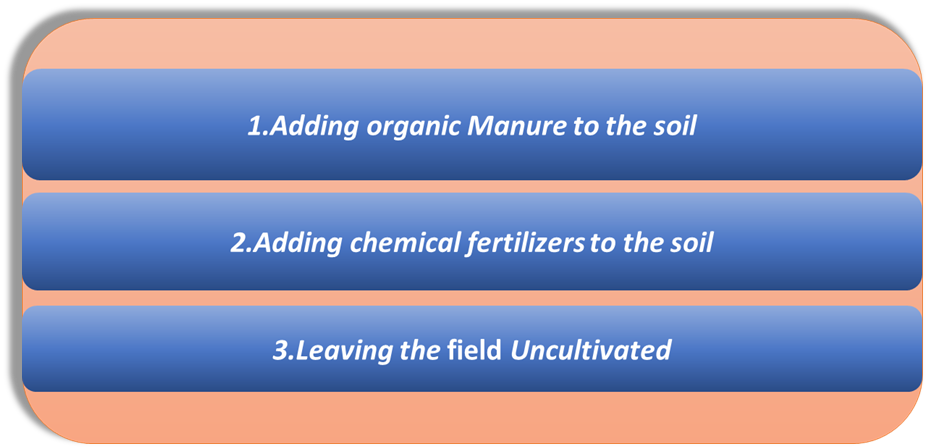
Examples of Fertilisers
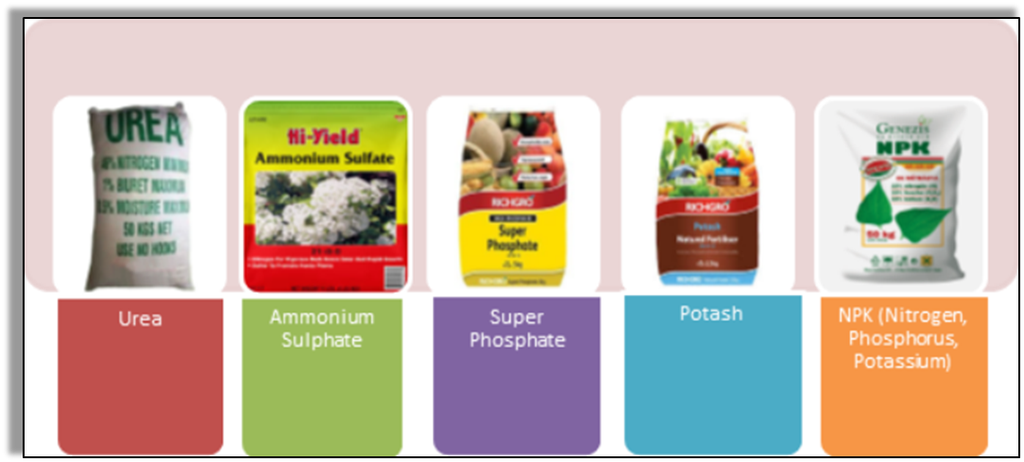
Pros and Cons of using Fertilizers
Pros: They are chemicals, rich in particular nutrients and help farmers get a better yield of crops like wheat, paddy and maize.
Cons: They make the soil less fertile and also cause water pollution.
Why is Manure better than Fertilisers?
Organic Manure is better than Fertilisers because:
- It adds humus to the soil and increases its water holding capacity,
- Improves soil texture,
- Makes soil porous which makes the exchange of gases easier, and
- Increases the number of friendly microbes.
State an example of Crop Rotation
In North India, farmers used to grow legumes in one season as fodder and wheat in the next season. This helped the soil to get replenished with nitrogen*.
*Root nodules of leguminous plants have Rhizobium bacteria that fix atmospheric nitrogen and make it usable by plants.

 Izram
Izram
 PathSet Publications
PathSet Publications
